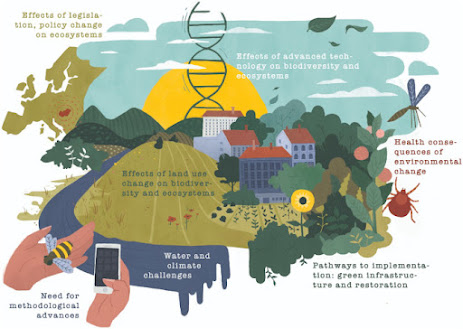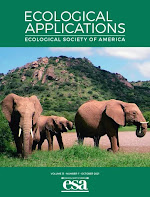A kocsányos tölgyek és a gyepes mozaik
Az MTA-DE Lendület Funkcionális és Restaurációs Ökológiai Kutatócsoport tagjának, az ELKH Ökológiai Kutatóközpont tudományos munkatársának, Erdős Lászlónak első szerzőségével egy cikkünk jelent meg január második felében a European Journal of Forest Research ingyenes hozzáférésű folyóiratban. Erről számolunk most be az alábbi blogbejegyzésben. A kocsányos tölgy Európa egyik legfontosabb erdőalkotó fafaja. A kutatók már régen felfigyeltek arra, hogy a faj zárt erdőkben alig újul, azaz bár a kifejlett egyedek jelen vannak, hiányzik az utánpótlás magoncokból és csemetékből. A jelenség egyik lehetséges magyarázata, hogy a kocsányos tölgy fényigénye viszonylag nagy, így az újulat főként tisztásokhoz, cserjésekhez, erdőszegélyekhez kötődik, ahol megfelelő a fényellátottság.
Kocsányos tölgy magonc a Kiskunságban (Fotó: Bajomi Bálint)
Mindezt azonban eddig főként Európa nyugati és északi részein vizsgálták, ahol a tölgy számára biztosított a megfelelő vízellátottság. Közép-Kelet-Európában viszont, ahol a zárt erdők zónája felnyílik és gyepterületekkel mozaikot képezve az erdőssztyepp zónába megy át, jóval szárazabb viszonyok uralkodnak. Feltételezhető ezért, hogy itt a kocsányos tölgynek már nemcsak az árnyékos helyek, de a szárazság korlátozó hatásával is szembe kell néznie, ami korlátozhatja megújulási képességét. Vizsgálatunkban a Kárpát-medence egyik legszárazabb területén, a Kiskunságban vizsgáltuk a kocsányos tölgy makkjainak csírázását és a magoncok túlélését, fejlődését. Arra voltunk kíváncsiak, hogy a tölgy miképpen újul az erdők belsejében, az erdőszegélyekben, valamint a velük szomszédos gyepekben. A makkok és magoncok egy része csak a természetes csapadékot kapta, más részüket viszont ezen felül még rendszeresen locsoltuk is.

Jellegzetes táj a kísérlet helyszínét adó Fülöpháza térségében. (Fotó: Bajomi Bálint)
A Nyugat- és Észak-Európában tapasztaltakkal szemben a vizsgálat során úgy találtuk, hogy a gyepen a tölgy a legtöbb esetben már kicsírázni sem tudott, illetve a kevés kicsírázott példány igen hamar elpusztult, nagy valószínűséggel a szárazság miatt. Mindez különösen érdekes annak fényében, hogy a vizsgálat első éve szokatlanul csapadékos volt (742 mm az átlagos 530 mm helyett). Az öntözés révén további mintegy 20%-kal növeltük a csapadékmennyiséget, de a tölgyek túlélésén ez sem javított. Az erdőbelsők és az erdőszegélyek viszont egyformán alkalmasnak tűntek a kocsányos tölgy számára, hiszen ezeken az élőhelyeken a csírázás és a túlélés is sikeresnek volt mondható, még öntözés nélkül is. A tőlünk nyugatabbra és északabbra tapasztaltakkal szemben tehát a tölgyek jól boldogultak az erdőfoltok belsejében is. Ennek lehetséges magyarázata, hogy a Kiskunságban az erdőfoltok lombkoronája nyílt, azaz sok fényt enged a talajszintre, ami kedvez a fénykedvelő növényeknek, köztük a kocsányos tölgynek. Emellett a tölgymagoncok a kezdeti néhány évben viszonylag jól tűrik az árnyékolást, mivel ekkor még rendelkezésükre áll a sziklevélben raktározott energia. Kutatásunk megállapította, hogy a vizsgált élőhelyeken a kocsányos tölgy magoncainak növekedése rendkívül lassú volt, négy év alatt is csupán arasznyi magasságot értek el.
Kutatásaink alapján érdemes újragondolni a Kiskunság (és a Kárpát-medence más száraz régióinak) erdősítését. A fák szén-dioxidot vonnak ki a légkörből, így képesek mérsékelni a globális felmelegedést. Ha idegenhonos fajok helyett hazai fákból hozunk létre erdőket, az a biodiverzitás számára is hasznos lehet. Mégsem érdemes mindenhol erdőültetéssel próbálkozni. Ahogyan azt kutatásunk is kimutatta, egyes gyepterületek még az átlagosnál jóval csapadékosabb években és öntözés mellett is alkalmatlanok fás vegetáció fenntartására. Ezekre a helyekre nem való erdő, itt a meglévő, sokszor nagyon értékes közösségek megóvására kell koncentrálnunk. A cikk eredeti összefoglalója az alábbiakban olvasható.
Oak regeneration at the arid boundary of the temperate deciduous forest biome: insights from a seeding and watering experiment
Erdős László, Szitár Katalin, Öllerer Kinga, Ónodi Gábor, Kertész Miklós, Török Péter, Baráth Kornél, Tölgyesi Csaba, Bátori Zoltán, Somay László, Orbán Ildikó, Kröel-Dulay György
Previous studies found that pedunculate oak, one of the most widespread and abundant species in European deciduous forests, regenerates in open habitats and forest edges, but not in closed forest interiors. However, these observations usually come from the core areas of the biome, and much less is known about such processes at its arid boundary, where limiting factors may be different. In a full factorial field experiment, we tested the effects of different habitats (grassland, forest edge, forest interior) and increased growing season precipitation on the early regeneration of pedunculate oak in a forest-steppe ecosystem in Central Hungary, at the arid boundary of temperate deciduous forests. In the grassland habitat, seedling emergence was very low, and no seedlings survived by the fourth year. In contrast, seedling emergence was high and similar at forest edges and forest interiors, and was not affected by water addition. Most seedlings survived until the fourth year, with no difference between forest edge and forest interior habitats in numbers, and only minor or transient differences in size. The lack of oak regeneration in the grassland differs from previous reports on successful oak regeneration in open habitats, and may be related to a shift from light limitation to other limiting factors, such as moisture or microclimatic extremes, when moving away from the core of the deciduous forest biome towards its arid boundary. The similar number and performance of seedlings in forest edges and forest interiors may also be related to the decreasing importance of light limitation.


















